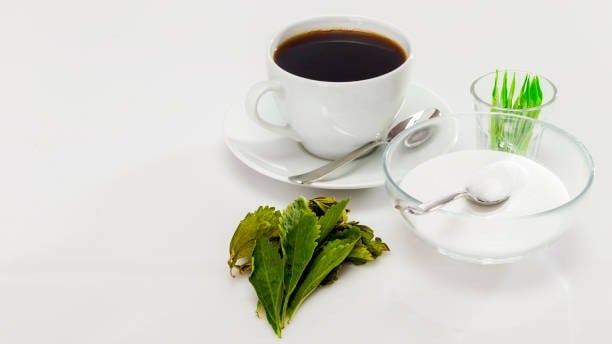Growing Enough Alternative Sweetener Plants for a Person for a Year
A Concise Guide
GARDENINGFOOD STORAGE
By: Stephanie
2/29/20243 min read


Introduction
Growing your own alternative sweetener plants, such as stevia and sorghum, can be a rewarding and sustainable way to ensure a year-round supply of these natural sweeteners. In this guide, we will walk you through the processes involved in cultivating and preserving stevia and sorghum, both indoors and outdoors, to meet the daily requirements of one person.
Seed Variety Selection
When selecting stevia and sorghum seeds for your garden, opt for heirloom varieties. Heirloom seeds are open-pollinated and have a rich genetic diversity, which can result in healthier plants and better yields. Look for reputable seed suppliers who specialize in organic and heirloom seeds. Honey Drip sorghum is an old variety used for syrup production. Stevia can be difficult to grow and is not perennial in Zone 6.
Indoor and Outdoor Gardening
To ensure a year-round supply, it is recommended to grow stevia indoors and sorghum outdoors. Indoor gardening can be achieved through containers or hydroponics systems, while outdoor gardening requires suitable garden beds or raised beds. I like to plant sorghum as "stakes" for vining plants.
Container Gardening
For indoor gardening, choose large containers with good drainage. Fill the containers with a well-draining potting mix and sow the seeds according to the package instructions. Place the containers in a sunny location, ensuring that the plants receive at least 6-8 hours of sunlight each day. Regularly water and fertilize the plants as needed.
Outdoor Gardening
In outdoor gardens, prepare the soil by loosening it and removing any weeds or debris. Incorporate organic matter, such as compost or well-rotted manure, to improve soil fertility. Sow the seeds in rows or blocks, following the recommended spacing for each plant. Water the plants regularly, ensuring the soil remains consistently moist but not waterlogged.
Interplanting and Companion Planting
To maximize yields and deter pests, consider interplanting and companion planting with other compatible plants. For example, planting marigolds or basil near stevia and sorghum can help repel pests and attract beneficial insects. Additionally, planting nitrogen-fixing plants, such as legumes, can enhance soil fertility.
Fertilizer and Compost
For organic garden fertilizer, use compost made from kitchen scraps, yard waste, and other organic materials. Compost enriches the soil with essential nutrients and improves its structure. Apply compost to the soil before planting and periodically throughout the growing season to promote healthy growth and high yields.
Preservation
To preserve stevia, harvest the leaves when they are fully grown but before flowering. Dry the leaves in a well-ventilated area until they are crisp, then store them in airtight containers away from direct sunlight. Alternatively, put the fresh leaves in neutral alcohol to make stevia extract.
For sorghum, harvest the stalks when the grain is filled in but has not hardened. Pull the leaves off and run through a sorghum press, collecting the liquid. Leaves and unripe seeds can be used as animal fodder or compost. Seeds can also be dried and used for flour. Boil the sap until it reaches syrup consistency, about a 10:1 ratio, skimming the surface as you go. Fill hot, sterilized mason jars, and seal.
Planting Area
The amount of planting space required to provide a year's worth of stevia and sorghum for one person will vary depending on the individual's consumption. As a general guideline, plan for approximately 10-15 square feet of planting area per person for stevia and 25-30 square feet for sorghum. Adjust the planting area accordingly based on your specific needs and preferences. A quarter acre should make about 100 gallons of syrup.
Conclusion
Growing alternative sweetener plants like stevia and sorghum can be a fulfilling endeavor that allows you to have a sustainable supply of natural sweeteners. By following the processes outlined in this guide, you can cultivate and preserve these plants, both indoors and outdoors, to meet your daily requirements. Enjoy the benefits of homegrown, organic sweeteners while reducing your carbon footprint.